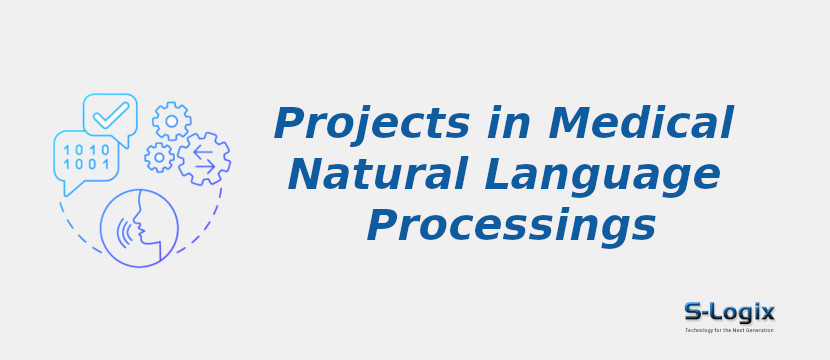Project Background:
Medical Natural Language Processing (NLP) revolves around harnessing the power of computational linguistics and artificial intelligence to extract valuable information from vast amounts of medical text data. In healthcare, a significant portion of valuable clinical information is buried in unstructured clinical notes and other textual sources. Medical NLP seeks to address challenges by developing advanced algorithms and models capable of understanding, extracting, and organizing relevant information from textual data. This project involves applying NLP techniques tailored to the intricacies of medical language, including recognition of medical entities, relationships, and context. The interdisciplinary field intersects with medicine to unlock valuable insights and enhance the overall efficiency of healthcare systems through an automated analysis of medical texts.
Problem Statement
- The Medical NLP centers around the challenges of unstructured medical text data, hindering efficient information extraction and utilization.
-
Challenges include the ambiguity of medical language, the complexity of medical terminologies, and the need to capture nuanced context.
Moreover, variations in writing styles among healthcare professionals further complicate extracting meaningful data.
-
It also aims to address the issues by developing NLP solutions to accurately identify and extract medical entities and context from diverse medical texts.
-
Additionally, ensuring the interoperability of NLP tools with existing healthcare systems and addressing data privacy concerns are integral aspects of the problem statement.
-
Ultimately, the goal is to transform unstructured medical text into structured, computable data, enabling more effective decision-making and knowledge extraction from the wealth of textual information in the medical domain.
Aim and Objectives
- Enhance healthcare information extraction and utilization by applying NLP techniques to unstructured medical text data.
-
In unstructured text, develop NLP models to accurately identify medical entities, such as diseases, symptoms, and treatments.
-
Extract relationships between medical entities to capture contextual information and enhance understanding.
-
Improve NLP algorithms to account for the nuanced context in medical language, considering variations in writing styles and the complexity of terminologies.
-
Transform unstructured medical text into structured, computable data to facilitate efficient analysis and decision-making.
-
Ensure seamless integration of NLP tools with existing healthcare systems to maximize accessibility and usability.
-
Implement measures to address data privacy concerns associated with processing sensitive medical information.
-
Facilitate the discovery of new knowledge and patterns within medical text data, advancing the understanding of diseases and treatment modalities.
Contributions to Medical Natural Language Processing
1. Development of robust NLP models capable of accurately identifying and classifying medical entities, such as diseases, symptoms, medications, and procedures, in unstructured text.
2.
Improved NLP algorithms that consider the nuanced context of medical language, including variations in writing styles, abbreviations, and the intricate nature of medical terminologies.
3.
The development of tools that transform unstructured medical text into structured data enables efficient analysis, retrieval, and integration with healthcare systems.
4.
Contribution to the creation of NLP-driven systems that offer valuable insights from medical text aids clinicians in making informed decisions and improving patient care.
5.
Efforts to ensure seamless integration of NLP tools with existing healthcare systems foster interoperability and enhance accessibility for healthcare professionals.
6.
Implement measures to address data privacy concerns associated with processing sensitive medical information, ensuring compliance with healthcare regulations.
7.
Facilitation of knowledge discovery within medical text data enables researchers and clinicians to uncover new patterns, correlations, and insights that contribute to a deeper understanding of diseases and treatment modalities.
Deep Learning Algorithms for Medical Natural Language Processing
- ClinicalBERT
-
BioBERT
-
Long Short-Term Memory Networks (LSTMs)
-
Gated Recurrent Units (GRUs)
-
Transformer-based Models
-
Convolutional Neural Networks (CNNs)
-
Attention Mechanisms
-
Named Entity Recognition (NER) Models
-
Recursive Neural Networks (RNNs)
Datasets for Medical Natural Language Processing
- THYME (Temporal Histories of Your Medical Events)
-
SHARP
-
Clinical-Trials.gov Dataset
-
OHDSI Databases
-
Electronic Health Record (EHR) Datasets
-
PubMed Central Open Access Subset
-
NCBI Disease Corpus
-
ShARe/CLEF eHealth Evaluation Lab Task 2 (ShARe/CLEF)
Performance Metrics
- Accuracy
-
Precision
-
Recall
-
Specificity
-
F1 Score
-
Matthews Correlation Coefficient (MCC)
-
Cohen Kappa
-
BLEU Score
-
ROUGE Score
-
Area Under the Receiver Operating Characteristic curve (AUC-ROC)
-
Area Under the Precision-Recall curve (AUC-PR)
Software Tools and Technologies
Operating System: Ubuntu 18.04 LTS 64bit / Windows 10
Development Tools: Anaconda3, Spyder 5.0, Jupyter Notebook
Language Version: Python 3.9
Python Libraries:
1. Python ML Libraries:
- Scikit-Learn
- Numpy
- Pandas
- Matplotlib
- Seaborn
- Docker
- MLflow
2. Deep Learning Frameworks:
- Keras
- TensorFlow
- PyTorch
